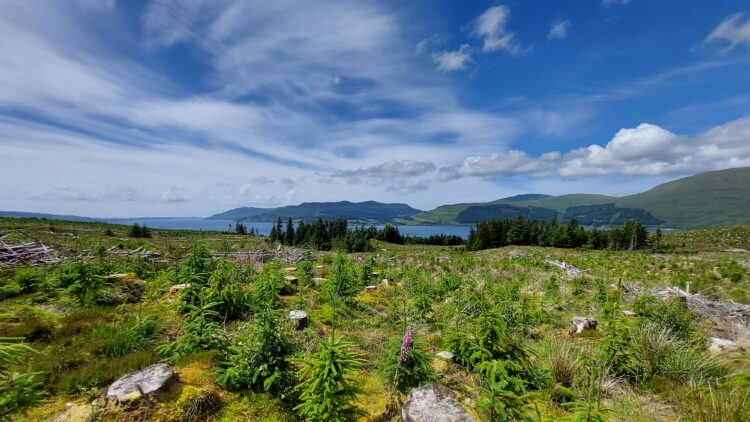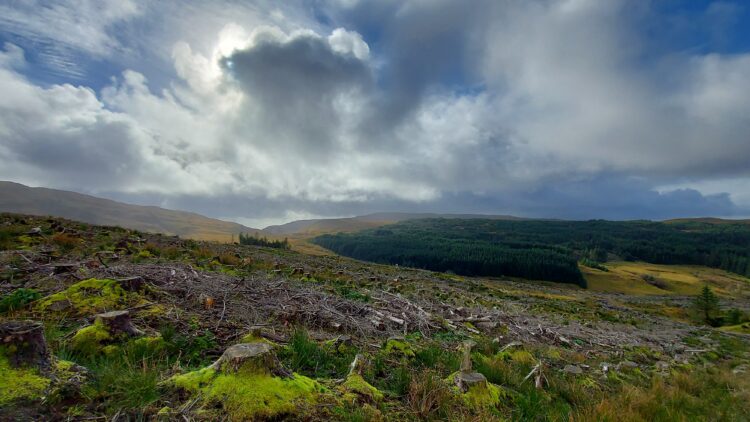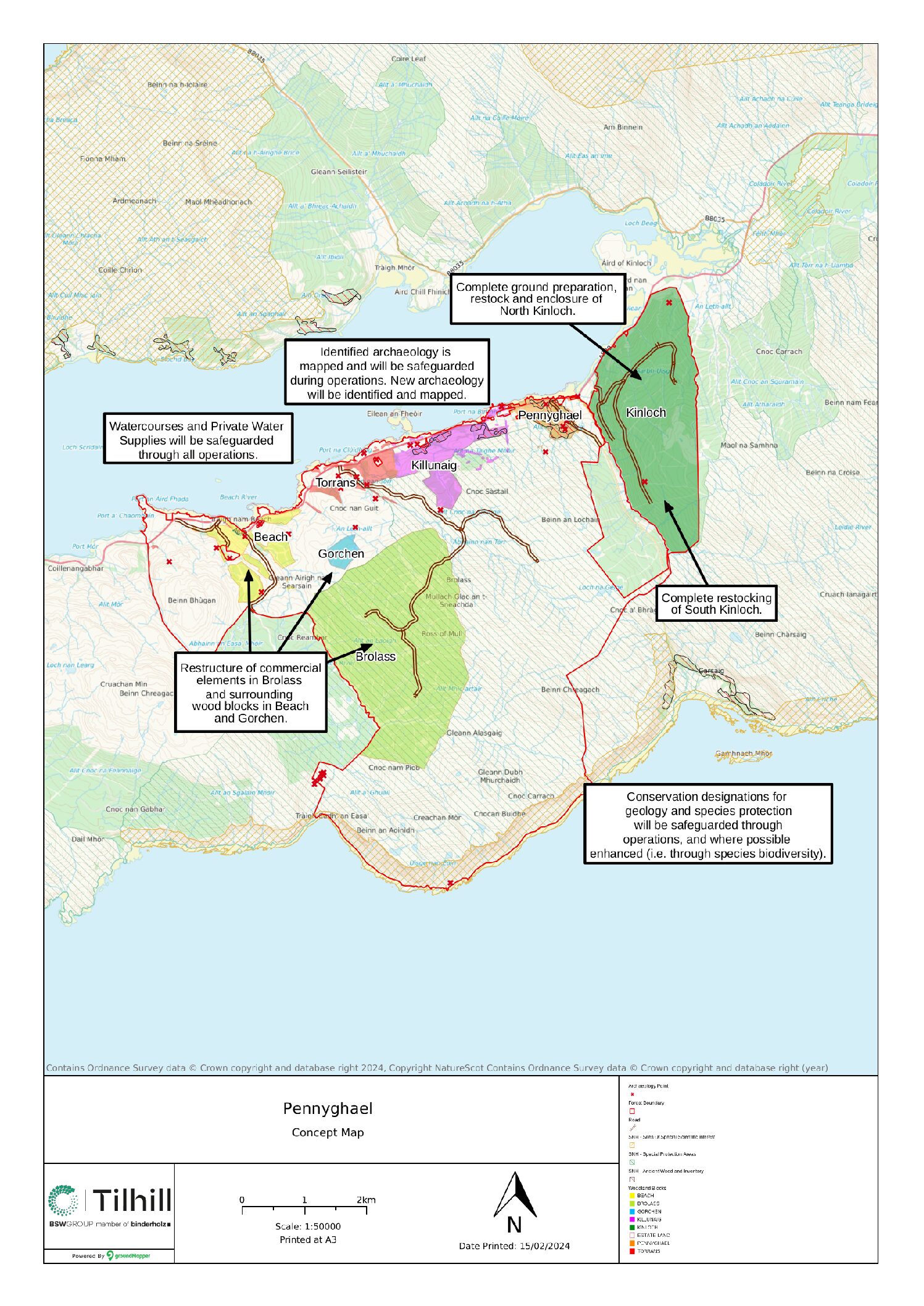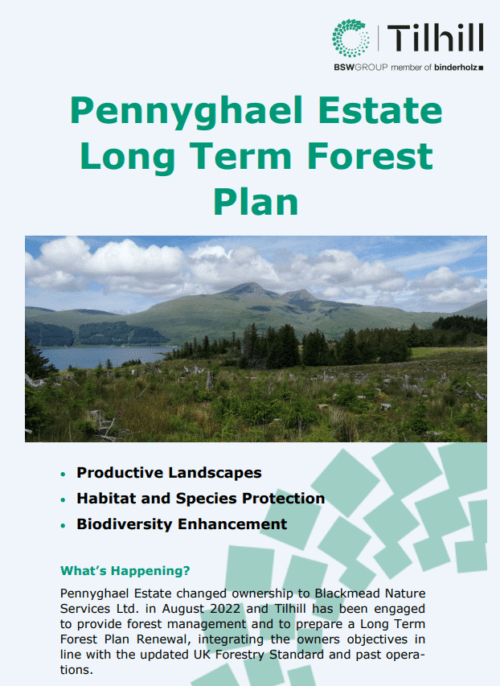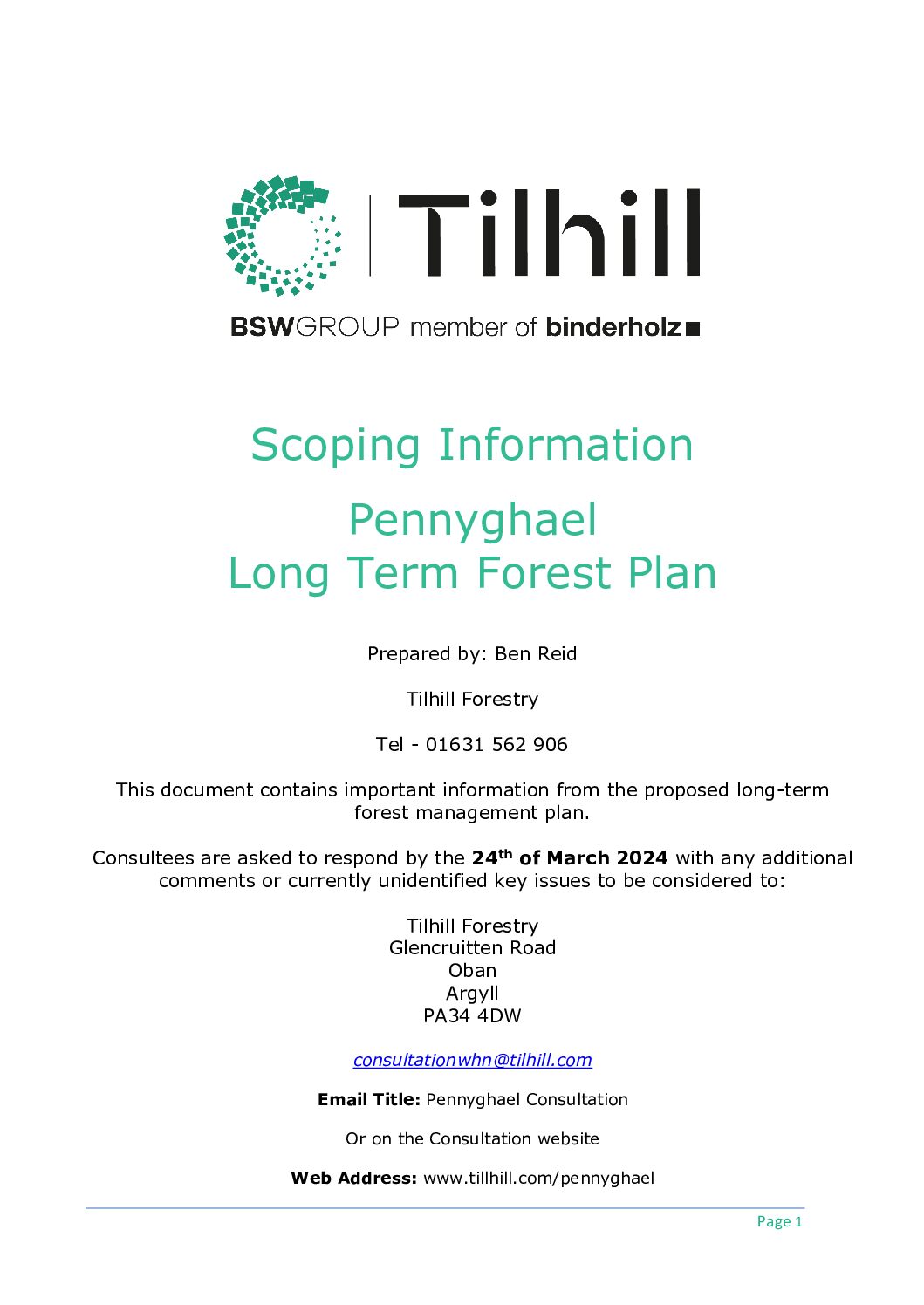What’s Happening?
Pennyghael Estate changed ownership to Blackmead Nature Services Ltd. in August 2022 and Tilhill has been engaged to provide forest management services and to prepare a Long Term Forest Plan Renewal, integrating the owner’s objectives in line with the UK Forestry Standard and past operations.
FAQ's
What is being proposed for the woodlands in Pennyghael?
This Long Term Forest Plan (LTFP) will cover the existing woodlands on Pennyghael Estate. The current operations that are being anticipated within this plan include:
Kinloch – Following the harvesting operations completed in 2021, we will be completing the deer fencing, ground preparation, and restocking of this woodland area. This will predominantly involve restocking productive Sitka Spruce, but with a mix of Scots Pine and Native Broadleaves to achieve UKFS species proportions and to provide diversity within the woodblock.
Brolass / Gorchen / Beach – These woodland blocks have elements of commercial conifers within them which are of a harvestable age. These forests may be harvested and restocked within the lifetime of this plan and restocked with Sitka where appropriate and a mix of conifers and broadleaves planted elsewhere to enhance biodiversity where possible within the existing woodland boundaries.
Torrans / Killunaig / Pennyghael – These mixed woodlands of mixed broadleaves and conifers,along with elements of native broadleaves lie on areas of Ancient Semi Natural woodland or are designated as long established woodlands of plantation origin. These areas will be managed for their biodiversity value on a minimal impact basis. Any works undertaken will be part of any work necessary on health and safety, or plant health grounds.
Will chemicals be used in the forest?
The predominant threat to planted conifers in the West coast is the large pine weevil. Historically, this has been controlled through the treatment of planting stock and post planting spraying of young trees with Gazelle.
As of July 2024, this product will be banned with no replacement product in place. Therefore, the restocking of Kinloch will occur with untreated trees and no weevil spraying is planned for this woodblock. The control of large pine weevil will still be a concern for the successful establishment of trees, and options will be considered for their future control in further harvesting coupes, where the highest risk periods are the 5 years following harvesting. This is when the large pine weevil feed on and reproduce within the exposed soft layers of wood between the external bark and the harder core of the exposed stumps, and then proliferate to feed on newly planted seedlings.
The use of chemicals within the forest is always a carefully considered decision, directed by Tilhill’s Integrated Pest Management System which grew from the Tilhill Chemical Reduction Strategy. All chemical use will be based on a decision following the identification of a specific need for which there is no better alternative and the completion of a thorough risk assessment. The application of any chemical will then be conducted following legally mandated best practice and product specific instructions with trained and certified professionals.
How many trees will be planted?
Restocking will occur to achieve UKFS mandated stocking densities as prescribed through felling permission documentation issued by Scottish Forestry. These are 2 500 stems per ha for conifers after 5 years, and 1 100 stems per ha for broadleaves after 5 years.
What species mix? And why?
The minimum species composition of a forest is mandated by the UKFS. This details the minimum proportions for different species and areas of open ground within a forest area.
As a commercial forest, the owner is seeking to maximise the productive extent of the forest within the proportions as listed in UKFS on ground that can support a productive crop. On areas where commercial crops is not viable, opportunities for enhancing the biodiversity of the forest will be explored through the planting of native broadleaves and other mixed conifers.
What is the tree provenance?
All native broadleaves will be planted from the same or neighbouring provenance as directed in the UKFS.
How much carbon will be sequestered throughout the project?
As this plan currently does not incorporate any woodland creation, there will be no additional carbon sequestration associated with the ongoing sustainable management of the existing forest in Pennyghael.
Should a woodland creation scheme be successful, this will create the opportunity to sequester more carbon and will be managed on a scheme-by-scheme basis.
Will the timber haulage cause disruption?
Timber haulage will be planned to minimise disruption to the community as much as possible with access to a pier to facilitate timber transport off the island.
Will there be public access?
There is a network of paths and tracks across the estate that are available for non-motorised access to the community and visitors alike as per the Outdoor Access Code. Advisory notices may be implemented during certain forestry operations, and these routes will be accessible for non-motorised use according to the guidance provided on posted signs.
Will there be habitat and species protection?
Yes. A large section of the estate and the entirety of Brolass is within the Cnuic agus Cladach Mhuile Special Protection Area (SPA) which is designated for Golden Eagles. All operations within the SPA will be managed within the requirements and obligations of the SPA to ensure that forestry operation do not negatively impact on the Golden Eagle population.
All operations will also be preceded with the appropriate environmental checks to ensure that no work negatively impacts any previously unidentified habitats, species, archaeology, or watercourses.
Where possible, the biodiversity of the estate will be enhanced through the expansion of native broadleaf planting and the management of the existing mixed and native broadleaf blocks.
Why plant trees and manage forests?
Woodlands improve the quality of our environment:
- Wooded catchments help protect the quality of our drinking water supplies and can reduce the impact of flood events.
- Trees capture harmful pollutants in our atmosphere and improve our air quality.
- Tree canopies provide shade, shelter, and absorb sound. Soils, animals, and humans can be protected from the extremes that our weather and climate can throw at us.
- Woodlands help to stabilise soils, reducing erosion and slips. They can protect against pollution by providing a buffer between source and receptor and help the recovery of any contaminated land. Woodlands offer a rich habitat for a range of species including critical pollinators, birdlife, animals, and plants.
We want to hear from you.
Please take part in the initial consultation survey below.




